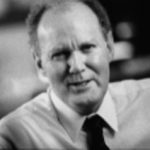Episode Notes
How much would you pay to claw back some extra time? Would the answer be different now that, as one of the few silver linings of COVID 19, you can work from home a lot more? Would it be $10 a week? $20 a week? Transport expert Professor David Hensher actually knows the answer. (Spoiler: It’s a lot!)
The death of commuting is making many of us happier, but has 2020 really been our one-way road out of traffic congestion? And if it is, how will our cities look on the other side?
Hannah Stenning: Sydney is such a bad place for commuters if everyone has to be getting in there. I’m sure my one and a half hours each way is not unusual for Sydney.
Ginger Gorman: That’s Hannah Stenning, mum of two year old twins, and she’s also Head of Video at News Corp.
Hannah Stenning: Before COVID, I was commuting three hours a day, four days a week.
Ginger Gorman: So Hannah lives in Mona Vale on Sydney’s Northern beaches. And before the COVID-19 pandemic turned all of our worlds upside down, she was spending about 12 hours a week getting to and from her office in Surrey Hills.
Hannah Stenning: It meant that I had to get grandparents to help in the morning with day-care drop-off. My husband always had to do day-care pickups, I was always saying I’m in a rush or when I’m really tired when they’d got home from day-care, that was tough.
Ginger Gorman: Of everything, we lost in 2020, I reckon the thing that none of us missed was traffic. And it’s not just Sydney siders like Hannah. The average commute time in Aussie cities last year was about 66 minutes a day.
Hannah Stenning: The way that I had to frame the commute, was that it was just a trade-off for living in a beautiful place. I didn’t think about it too much. I tried not to get too down about it. It’s just something that I had to do every day and I had to make it work.
Ginger Gorman: All those hours were spent just sitting bumper to bumper, on a motorway, crawling along at a snail’s pace. This is Seriously Social, I’m Ginger Gorman, and on the podcast today, the traffic congestion solutions that experts have been pitching for years have finally come to fruition. And all it took was a global pandemic.
Like Hannah said, before 2020, we mostly just put up with traffic in our lives. But for Professor David Hensher, he’s known for a long time that something had to give. So David’s a transport economist and what that means is he looks at the economic impact of things like commuting, traffic congestion, and working from home.
Professor David Hensher: Transportation has always struggled, as a sector to contain or tame congestion. The way in which economists like me have been suggesting a way forward has always been rejected by politicians, namely to change the pricing model in the way we price the use of our roads.
Ginger Gorman: What do you mean by that?
Professor David Hensher: Road pricing is a framework in which we want to look to come up with a set of prices for example, and the best one is a distance space charge, where for every kilometre you travelled on the road, when you are contributing to congestion, you should be paying for that.
And at the moment, the way we price our roads, which is mainly through registration charges in the small amount of fuel excise bears little relationship to the benefit that people get in congested conditions. Which essentially means they’re travelling for free in terms of their contribution to the cost of congestion.
Ginger Gorman: David is the founding director of the University of Sydney‘s Institute of Transport and Logistics Studies and he’s also a fellow of The Academy of the Social Sciences in Australia. And of course, like all of us, he understands that COVID-19 has been a global tragedy, but a lot of us have been able to find a silver lining. And for him, it’s the fact that COVID-19 has been the catalyst for the biggest and the most effective policy lever on congestion in decades. Actually probably the biggest ever.
Professor David Hensher: One of the unintended positive consequences has been a real experiment. The opportunity to actually tame our traffic by simply implementing a working from home policy.
Ginger Gorman: We’re going to come back to that in a moment. But I wonder if you could talk to us a little bit about the strategies that were used before COVID. What did governments and politicians normally do to try to stop so much traffic on our roads?
Professor David Hensher: Apart from improving the red, yellow, green signal on the traffic lights, they’re essentially building more roads. And as the congestion gets worse on the motorways or the arterials, which is the main roads, people are jumping into suburbia to avoid that and clogging up a lot of the local residential streets. It doesn’t really tame or reduce or manage the traffic congestion very well. All we’re doing in building infrastructure is buying a few years of growth and we’re back to where we started.
Because if you expand capacity, it will be filled as improved travel times are offered. And I’m not suggesting we should not improve infrastructure and build new infrastructure, but we need to price it appropriately. The simple rule is if you get a benefit you should pay for it.
Ginger Gorman: There’s no way that there’s going to be votes in making people pay more, to use the roads and pay more to use their cars.
Professor David Hensher: Aha, that’s the point. We have done a lot of research to basically agree with that point that we need, what we call the hip pocket test. Can we come up with a pricing model that not only reflects the true cost of using the roads, but also one that doesn’t make the costs worse than they are at the moment.
The best example is if we were to reduce or eliminate registration charges, which have no relationship to use and introduce a use related charge, which varies according to the level of congestion and we’ve promoted five cents a kilometre in peak periods. Then we would start to find, and please trust me on this because we’ve done the calculations is that in Sydney, the great majority of people would not be financially worse off surprise ask people to do the calculation, ask them how many kilometres they do in the peaks.
And we’ll tell them the peak seven till nine in the morning, three and five in the afternoon, say multiply by five cents. Compare that with half the registration charge. And most people will be surprised that they’re no financially worse off. But, and this is the important thing we’re sneaking up on them Ginger and we are showing them that they can have a 10% improvement in travel time.
Ginger Gorman: Politicians tend to like it when we value expensive things that boost spending in our economy. But time is a commodity too. And it’s a really valuable one for individuals like Hannah Stenning.
Hannah Stenning: A hundred percent time is by most valued commodity. All we have is time that we focused on our work to achieve want you want to achieve and make money as well and time that we have with our family. And you can’t get it back once it’s gone, it’s gone. Imagine how many more hours I would have been able to not be rushing with my kids to get them ready in the morning and how many more hours I would have been able to exercise or go for a swim in the morning, or just do something that you want to be doing.
Ginger Gorman: Okay for Hannah, time is priceless, but that doesn’t actually mean a copy valued. Professor David Hensher has crunched the numbers and it turns out that most of us would pay $16 an hour. So 16 bucks an hour to cool back some extra time.
Professor David Hensher: A figure like that is based on a whole range of studies that have been undertaken for many years, where we use survey data to observe people, making choices between different modes of transport that have different travel times and costs. And from that, you can infer through people’s choices, how much they willing to pay. The federal government normally reports each year, the cost to society of loss, travel time due to congestion.
And the Sydney metropolitan area the latest figure was about 10 billion. What we have found in the period around late May in during COVID this year is that there is a significant saving in time costs. Really it’s a reduction in time costs because people are not travelling as much. And this is commuting they’re working from home. And that actually reduces from 10.5 billion down to just under five billion. I don’t expect that to necessarily stay at that as time goes by and more people go back to work, but I doubt it will return to 10 billion.
Ginger Gorman: You’ve talked a little bit to this David, but I’m interested in how the economy benefits from reduced congestion.
Professor David Hensher: I think, we need to distinguish industry from individuals, when it comes to industry it’s definitely productivity gain. One of the biggest costs to industry is the loss of productivity due to congestion. Of course, this is mainly related to the distribution of goods and services and distribution costs or logistics costs are typically 16% of the entire cost of doing business. So it’s a very high dollar value that we’re talking about here. And it’s not just congestion on the roads it’s congestion at the airport.
Ginger Gorman: Given the financial pressure that airlines are now under. Is it possible to see an economic benefit from the reduction in air travel?
Professor David Hensher: Depends on who you’re talking to from the airline’s point of view, especially the long-haul Sydney Melbourne it’s going to be pretty bad news for a very, very long time if not forever, especially with business travellers. I suspect opting to not travel, to do that one hour meeting and spending four hours travelling.
Regional aviation, I think will do quite well because there’s a stronger growth in tourism by locals in the domestic market. In terms of any other implication, the airports as well need to start worrying because their revenue and especially their parking revenue and their retail revenue, which is often greater than the landing charges of airlines are going to suffer substantially because people just won’t be going to the airports.
So I think the airlines will actually take longer to recover and the airports than will local domestic ground transportation.
Ginger Gorman: This is where I began to save a downside. Because while the environment is better off and so is the mental health of a lot of people who used to drive to work, there are definitely winners and losers here.
Sheree: Pre COVID the foot traffic, it was huge, It was so busy.
Ginger Gorman: That’s [Sheree 00:11:40]. She owns whole grain bakery in the heart of Sydney.
Sheree: We would be at a 60 seater full the entire time. And now with the restrictions, we were closed for six months. We’ve reopened with the restrictions we’re now at 28 seater. In the beginning, we were pretty quiet, we’re hardly seen anyone walk by.
But we’ve seen that change, definitely over the last five weeks, six weeks now where the city has become a lot busier. So I’m assuming more people are catching public transport. More people are coming back to work in their offices, but I don’t expect it to sit, be back to normal as far as trade till perhaps early next year.
Ginger Gorman: And there’s also the matter of public transport. How has it been impacted? And how sustainable is a publicly funded transport service if the public just doesn’t use it? Here’s Professor Hensher again.
Professor David Hensher: It’s been hit seriously bad. We’re talking about 30% of what it was before, or sometimes worse. It’s slowly creeping back, but there’s still a problem with the messaging of public transport as being, not that safe from a security point of view, even though we know the risks on public transport, especially wearing a mask is very low indeed.
Ginger Gorman: And what happens to public transport when people don’t use it? Have we got all these empty trains and empty buses heading into the city centres.
Professor David Hensher: It’s a good point. In fact, I’m very proud to say that with the exception of Western Australia, we have maintained the same level of service throughout the pandemic, West Australia reduced the off peak. And that’s a very encouraging sign in of recognising that we need to provide a service historically, of course.
So we have done that and we’ve only ever recouped from the fair box, 25 to 30%. So it’s been heavily subsidized and now we’ll be even more heavily subsidized. But what I think COVID has done is said, maybe we don’t need new capacity for quite a lot longer because the crowding has disappeared.
Ginger Gorman: How willing are taxpayers though, to fund a service that fewer and fewer people are using, especially if so many of us are permanently going to be working from home at least a few days a week?
Professor David Hensher: It might be more critical than they were in the past, but they’ve been subsidising in the past as well. In fact, one of the great stories we like to share with people is that the people that are the greatest beneficiaries of heavily subsidised public transport are the relatively high income workers in the CBD. Because that’s where the services are much better. So you could say that the lower income people have been for many years cross subsidising the higher income people. It hasn’t changed, you could say it’s got worse.
Ginger Gorman: How does work from home and COVID impact the CBD of our cities?
Professor David Hensher: That’s a great question. And Ginger, I’m so glad you asked it because I think there’s been some commentary in the media. That’s totally misleading, especially from the property council, which is saying we need to get back to working to the CBD, to make it lively again, and to support businesses.
And while I’m not disagreeing with the general term, I do believe that we’re going to see no more than an 80% return at any particular time of day, which is still good for all those businesses that rely through the supply chain on commuters to go purchase coffee, go to the shops, restaurants, and so on.
But I honestly believe that there’ll be increased staggered working hours and people starting to work at home one or two days a week spread through the week. And that’s a good thing because that will take pressure off the CBD in terms of the need to support transport to, and from it.
So sorry guys in the property council, I know you’re all going to suffer because your rents might have a bit of a hit. And already small, medium and even large enterprises are starting to say, we don’t really need all that capacity anymore because we won’t be having people in the office at the same rate, even with staggered working hours are very important point as well.
The new idea of an office location is actually an office in the house. The is hot off the press today showed that nearly 75% of the people in our surveys either have an, a separate office or a currently building one because they think that’s the future.
Ginger Gorman: And that’s what I thought David, I’ve worked from home since 2015 when I was made redundant by the ABC. And I have a bedroom that is turned into a gorgeous office, overlooking my garden couldn’t be happier.
Professor David Hensher: Even residential construction organizations now are building in an office in all the new designs, something that was always an option. Now it’s not it’s part of the selling unit. So I think this is going to have a big impact on the property developers in terms of where they prioritize.\
And I suspect that the rates or the rents will drop in the CBD, but they will not necessarily be filled by those who would have liked to have been in the CBD when the rents were higher, simply because they do not need that space.
Ginger Gorman: Of course. Well, every cloud has a silver lining that doesn’t make me want that cloud hovering over us forever. Eventually, the world will find a way to either live with or eradicate COVID-19. So what becomes about most effective congestion relief once the Levi’s pulled back?
Professor David Hensher: Well, first of all, it won’t return to pre-COVID almost forever. Now, what does forever mean? It, at least in our lifetime next 50 years, maybe I just don’t think that will happen because people are seeing the virtues of working from home in terms of avoiding a long commute, improved wellbeing, especially now that the kids are back at school and generally speaking, employers are supporting it.
And that’s really important. It’s not just people wanting to work from home. It’s employers saying it’s not a bad idea to some extent that’s my favourite language, by the way, it should all be put in the context of, to some extent.
Ginger Gorman: Both the public and policymakers have really had their hands forced by COVID. If you like, this was a huge, external shock that changed all of our lives, but I’m wondering if you think there will be the political will now, to enact more policies or further policies that reduced congestion.
Professor David Hensher: This is the big question now the state government authorities like transport for new South Wales and TMR in Queensland. I definitely looking at ways in which they can take advantage of the new normal as it’s coming with lower congestion and lower crowding. And they are working through that.
It’s a little bit early to say what their response would be. But I do know in Queensland, for example, government is saying that one of their objectives is to maybe have one in four people working from home at any one time during the week. That’s phenomenal. I think also what governments should be doing is to work closely with industry, to encourage them, to see working from home as compliant with their sustainability charters.
And many big organizations have sustainability charters, but I’ve never done anything with them because they don’t know what to do with them and here’s an opportunity.
Ginger Gorman: David I know one of the things you’re really passionate about is diverting money from these huge road building exercises and pumping that money into much smaller projects in communities. Could you explain that to me?
Professor David Hensher: One of the things that COVID has done is a lot more activity occurring at the local or suburban level. What this means is that travel, especially what we call non-commuting travel, local travel is growing. And this means that the benefits of investing in improved infrastructure locally are likely to be far greater than they’ve ever been before. And the best examples are improved walkways and I’m doing something about cycleways.
Infrastructure Australia while supporting this is somewhat limited in their ability to promote these solutions because they only are interested in projects which cost 100 million or more. Many of these small projects are far less expensive, even though you could be spending a hundred million spread around the country, but individually they’re nowhere near that.
And as a consequence, they don’t really get the equal treatment that large projects do. And we know that the benefit cost ratios will be much higher because the costs are much lower.
Ginger Gorman: And I can just imagine if we’ve got beautiful footpaths and cycleways in communities all over Australia, that is also really going to add to people’s quality of life.
Professor David Hensher: Which is indeed generates health benefits and wellbeing. And generally, as people are working from home, they’re getting out more during the day, even if it’s just a pop-up to the shops or a bit of exercise and not by the way, being less productive at work. And they will benefit.
Hannah Stenning: Now I’m home two days a week and I’m in the office three days a week. The difference is that I now drive to the office. So that means my commute is 45 minutes each way, instead of an hour and a half each way. Having that extra bit of balance and having those days at home where I could really focus on work without any distractions.
But also hop down to the beach lunchtime, go to the gym in the morning, pick the girls up from day-care. I can drop them off in the mornings and I don’t have to rely on family to pick up all the pieces so that I can go to the office every day.
Ginger Gorman: Thanks for listening to seriously social I’m Ginger Gorman, if you like what we are doing. We would love you to share our pod on your social channels and tell friends. See you next time.
Useful Links
- Advanced modelling of commuter choice model and work from home during COVID-19 restrictions in Australia Camila Balbontin, David A Hensher & Matthew J Beck



